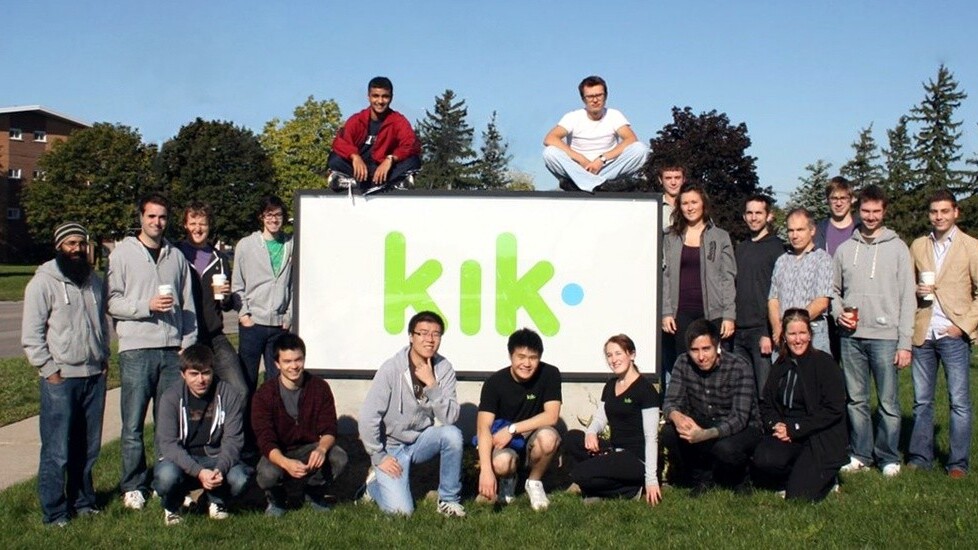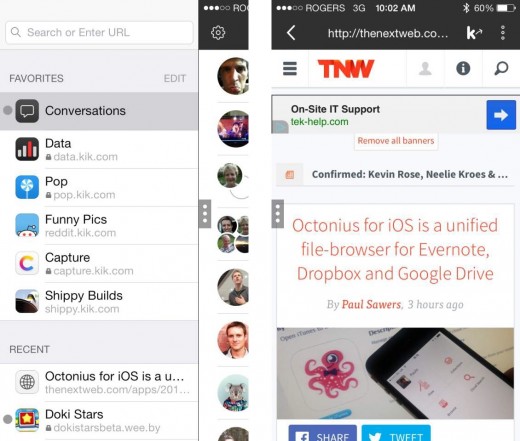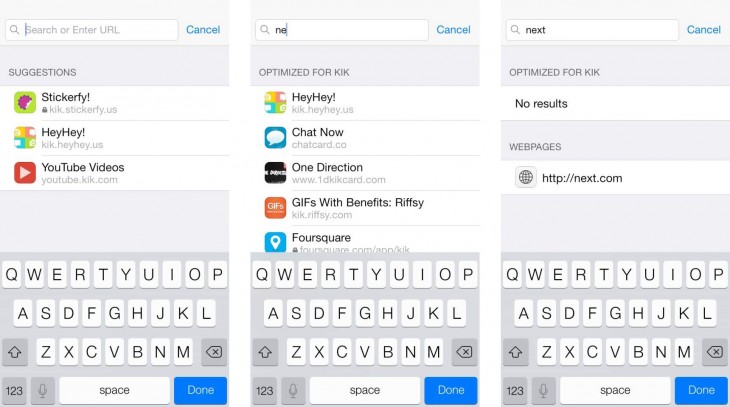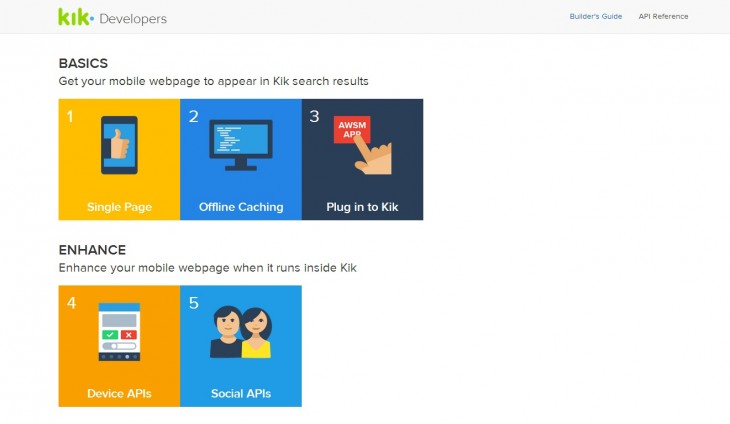
It’s been a fascinating journey for Kik — the messaging app which began with music sharing, got shot down by BlackBerry but went on to triple to its userbase to over 100 million registered users in the past year — and now it seems the Canadian startup has settled on a model to take its business to the next level.
Today it is announcing a major update to its iOS and Android apps, which are now becoming messaging apps with built-in Web browsers. A move that is aimed to boost engagement among users — many of whom are youngsters, and 50 million of whom are based in the US.
The Kik app now includes a URL bar in the side tray which will let users navigate to any site on the Internet (hence the browser part) to make sharing and consuming content as part of conversations simple. The rest of the app remains the same, but the URL bar replaces Kik’s Cards platform — which housed a set of HTML5-based apps announced in 2012 — and now brings the entire Web into its app.
More than just introducing a basic browser — and here’s where it gets interesting — Kik is releasing a series of APIs that will essentially enable websites and Web apps to be optimized for its messaging app, as if they were native to it. The APIs will enable push notifications, sharing via Kik, photos, tapping into the user graph and search among others.
Most of the APIs bring native app-like functionality into Kik, but the search API is the most interesting. By adding a line of code, it enables websites and apps to be ‘discoverable’ by users when they open the side tray and type in a URL, which also provides search results as they type, like Google Instant.
So if a user searches for games, then optimized websites with ‘game’ in their URL or a strong association with the word will show up as suggestions. Websites that have implemented Kik APIs will be able to offer native app-like services, which — in theory — means most users will be unaware that they are actually using a Web app rather than a native feature.
In addition to opening the door to potentially the entire Web, the updated app will also give Kik its clearest opportunity to make money to date. Kik has raised $27.5 million and — aside from launching stickers, some of which are paid for, last year — it has focused on building its product and userbase rather than revenue.
Kik CEO Ted Livingston explains that, while not entirely finalized, the company is likely to use its new Web focus to make money through a tailored ad and content network-style approach. So, for example, companies or developers wanting to reach a certain demographic or city of Kik users, could leverage the app for targeted outreach.
In addition to that, it will continue selling stickers — which Livingston says is going “well” so far, though he provides no figures — and may allow companies to pay to promote their sites and apps more prominently inside the Kik browser search. These ideas are still being formulated, as Kik is focused on getting optimized content on board first, but this is certainly the clearest revenue strategy that we’ve seen from it.
“We believe that monetizing users directly inside an app, such as via ad banners, is just short sighted,” Livingston says, “but we do think it is possible to monetize using optional but valuable services around them and their interests.”
At a time when messaging companies are either focused on keeping things simple — à la WhatsApp and its ‘No ads, no games, no gimmicks‘ manta — or building platforms to deliver a range of services — as is the case in Asia — Kik stands apart with an approach that could indeed be considered risky, but with the potential to please users and developers alike.
Kik says it will work with brands and developers to help promote their content among its community of users — while, for users, the appeal of the new app is that there are no limits to what they can see and do inside the app.
That means no frustration at clicking links only to be redirected to a browser, less crappy mobile experiences through poorly optimized mobile sites, and no need to leave the app to visit an app store to download an accompanying app — all of this will happen inside the app and its browser.
Though APIs are free, the company needs to convince developers and website owners to optimize for its messenger-meets-browser. Right now, Kik offers an engaged set of nearly 120 million users — and examples of apps hitting millions of Kik downloads within a day — so, if brands and developers are wondering how to reach the Facebook-fatigued demographic in the US, Kik could be an interesting option that requires little adaptation on their part.

There’s lots to be admired about this approach, particularly since Kik has already tried the linked app models (using SDKs to connect games to its service) and decided that bringing the Web to mobile is a better option.
“We launched the first native platform,” Livingston says,”and if we’re right about the Web this time, then I expect that other messaging apps will have a built in browser soon.”
Get the TNW newsletter
Get the most important tech news in your inbox each week.







